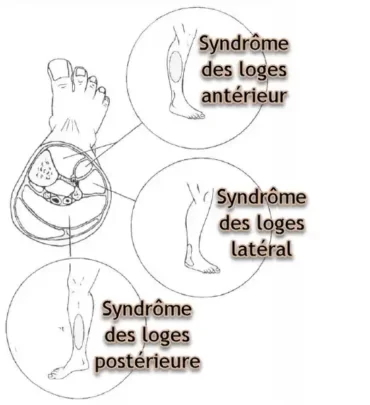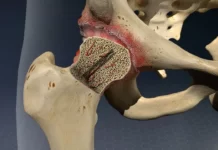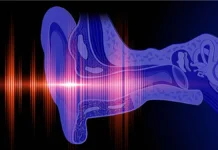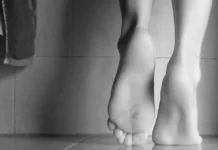Description
Compartment syndrome is a serious pathology that occurs when there is an increase in pressure in a compartment or muscle lodge.
- Compartment syndrome is a serious pathology that occurs when there is an increase in pressure in a compartment or muscle compartment.
- The compartments are sets of muscle tissue, blood vessels, and nerves of the arms and legs.
- Each compartment is surrounded and supported by thick tissue called the fascia.
- Since the fascia is not extensible, when there is swelling in a compartment, it causes pressure against the structures within it.
- In the long run, the blood circulates less well.
- This phenomenon disrupts the function and viability of the tissues contained in this compartment.
- The damage caused by compartment syndrome is mainly to muscles and nerves.
- It is possible to get compartment syndrome in any of the four compartments of the leg, 95% of cases occur in the anterior or lateral compartments.
- Because the muscles swell during exercise, the muscle compartments are usually large enough to accommodate this swelling.
- In the case of compartment syndrome, however, the connective tissue sheath is too small and when the muscles swell, pressure builds up inside the compartment and causes pain.
Acute compartment syndrome is an emergency requiring a fasciotomy, a surgical procedure in which the fascia is cut to allow the muscle to expand and decompress.

Causes
- Physical training overload
- Pliometry
- A set of strength training exercises focused on toning the striated skeletal muscles.
- Typically involves sprinting actions with a sudden change of direction, jumping ability without a run-up.
- Sandy surface
- Pliometry
- Abnormal foot mechanics
- Flat foot (hyperpronation), running will require more effort from the supporting muscles (extensor)
- Use the right shoe for the sport
- Make sure to stretch the calves (extensor)
- Dysfunction-free lumbopelvic mechanics.
- Anterior displacement of the pelvis will result in hypertensive calves
Symptoms
- The hallmark of acute compartment syndrome is severe leg pain that is out of proportion.
- As the disease progresses, patients may also experience paresthesia or numbness over the dorsum of the foot (with anterior or lateral compartment involvement) or over the plantar aspect of the foot (with deep posterior compartment involvement).
- Common
- Pain
- may not be relieved by strong analgesic drugs
- aggravated by passive stretching of the muscle group in the compartment.
- Paresthesia (altered sensation)
- A person may complain of “pins and needles” sensation, numbness and tingling. This may progress to a loss of sensation (anaesthesia) if no intervention is carried out.
- Pain
- Paralysis
- Pallor and lack of pulse
- Pallor can also result from arterial occlusion.
- Osteopathic approach
Osteopathic approach
Treatment will be preventive to ensure an overload of the calf.
- Mobilisation of the pelvis
- Muscle stretch
- quadricep
- calf (foot flexors)
- Strengthen muscles
- abdominals muscles
- hamstring
- Extensors of the foot
- If flat feet are present, use a plantar support brace.
- Release of trigger points in the calf (gastrocnemius)


























